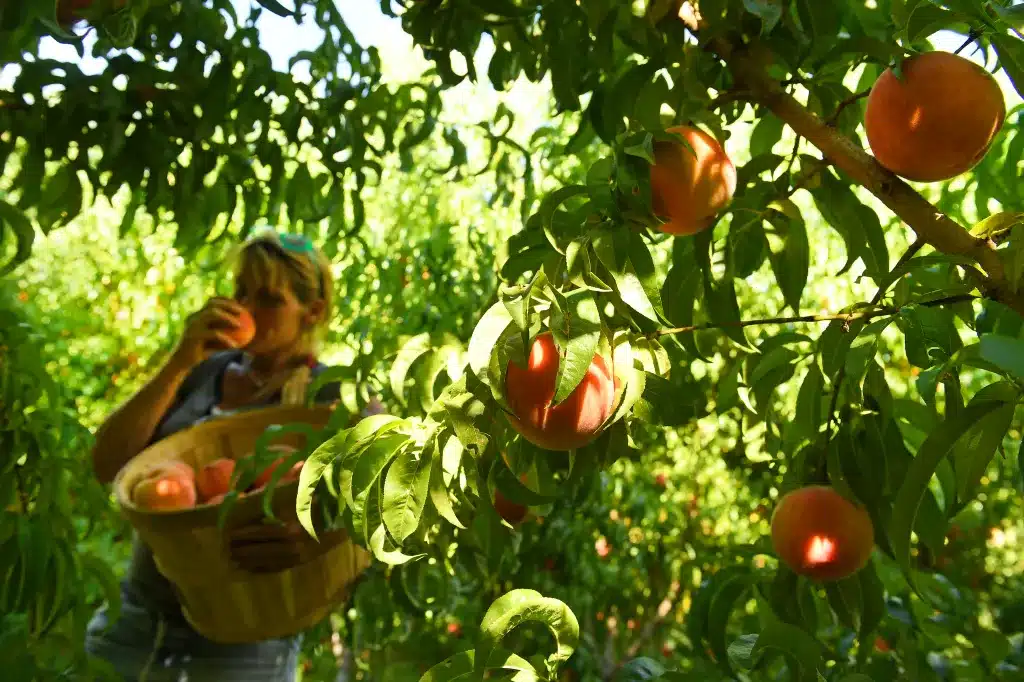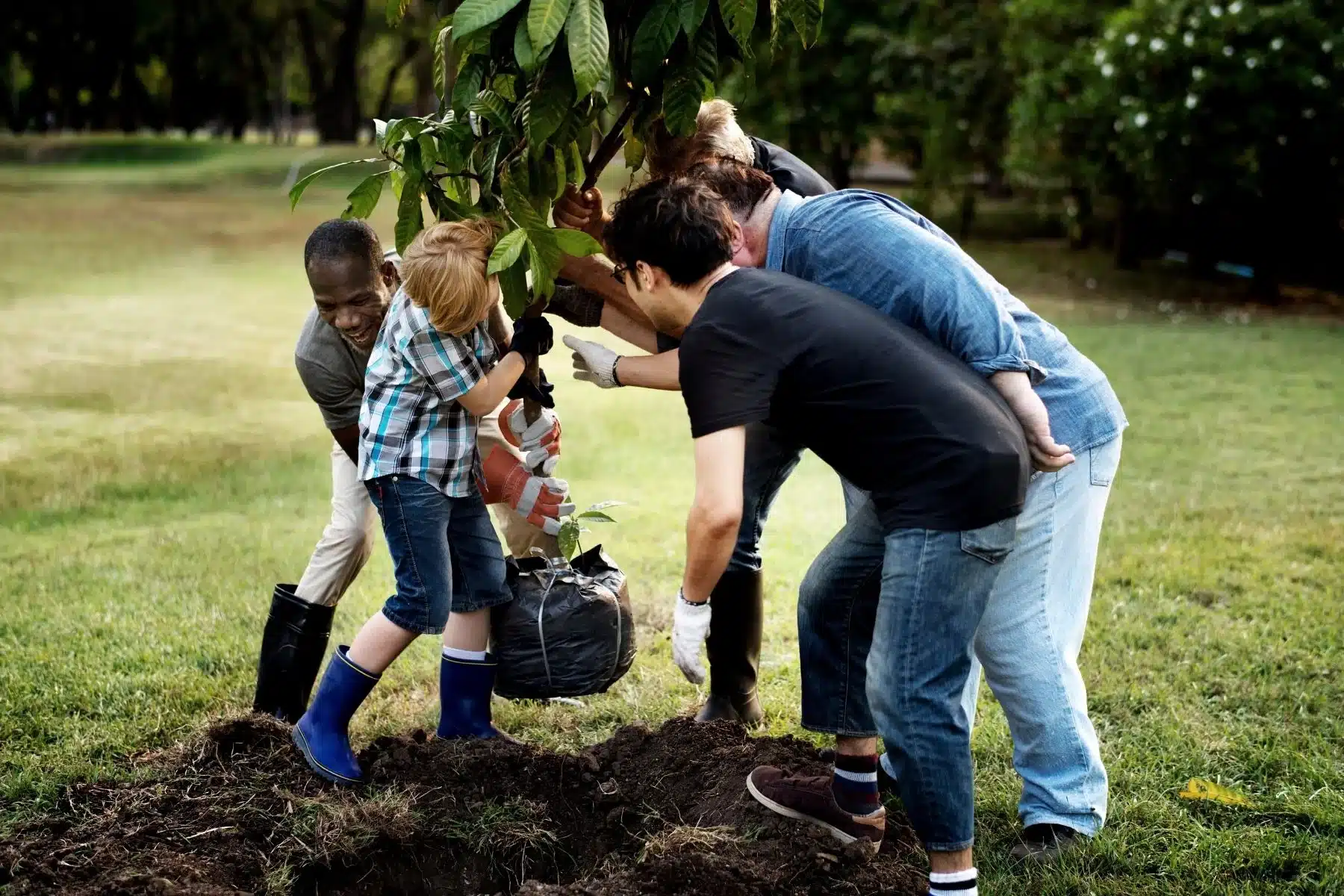A Guide to Planting and Caring For Fruit Trees in Your Home Garden
Is there anything more satisfying than biting into a fresh, juicy fruit picked straight from your own tree? You will feel fulfilled growing your fruit trees in your home garden as you will get delicious, nutritious, and organic fruits for years.
In this guide, I will share my personal journey of planting and caring for fruit trees in my own garden. I will cover everything you need to know, from choosing the right tree to caring for it throughout the growing season.
Choosing the Right Tree

Consider Climate and Soil Conditions in Your Area
When planting my plum trees, I also considered my area’s climate and soil conditions. I considered the size of my garden, ensuring that the fruit trees I chose would have enough space to grow healthy.
Preparing the Soil
It is crucial to prepare the soil properly so that your fruit trees can have a good start. First, choose a site with plenty of sunlight and good drainage. Avoid standing water or heavy clay soil areas, as these conditions can lead to root rot and other problems as your fruits grow.
Remove Debris
Once you get a suitable place to plant your fruit trees, it’s time to prepare the soil. Start by removing any debris like sticks, rocks, weeds, or other debris from the area, then loosen the soil to a depth of about 12 inches.
Use a shovel or garden fork to remove debris taking care not to damage any existing roots in the process.
Add Manure
Add compost or manures that have been well decomposed to improve soil fertility. The aim is to achieve a ratio of about one compost to two-thirds of the soil. Once you are done, mix the compost thoroughly in the soil and break up clumps if there are any.
Test PH of the Soil
To ensure your fruit trees are in the right range of PH, you need to check your soil’s PH. Many fruits grow well in acidic soils with a pH between 6.0 and 7.0. You can buy a soil test kit at your local garden centre, or send samples for analysis to a testing laboratory.
Correct Deficiencies

Purchase a Soil Testing Kit
You can buy a soil testing kit from your garden center or send the sample to an analysis laboratory for examination. The testing kit will give crucial information about your soil like nutrients present, such as nitrogen, phosphorus, or potassium, and nutrients your soil lacks.
Add Nutrients that your Soil Lacks
After knowing the nutrients your soil is lacking, add them. You can put fertilizers or compost, which are rich in many nutrients. For example, if your soil lacks nitrogen, you can add a nitrogen-rich fertilizer or manure.
It is worth noting that too much of something is poisonous so don’t add a lot of fertilizer or manure. Follow the instructions on the fertilizer carefully. I prefer adding organic fertilizer to my fruit trees, which releases nutrients slowly over time and helps improve my soil’s overall health.
Planting Fruit Trees

Caring for Your Tree
Fruit trees need to be taken care of to grow healthy and strong. They need to be watered, pruned, etc. Here are some tips for caring for your fruit tree:
Watering
Fruit trees must be watered regularly, especially during their first year of growth. Make sure to water deeply once a week, and make sure to soak the entire root zone of the tree.
Fertilizing
Your fruit trees will need fertilizer or manure to grow healthy and produce fruits. Apply a balanced fertilizer in the spring and again in the fall.
Pruning
Occasionally, you can be pruning your trees to promote fruit production and maintain their shape. Prune them in the late winter or early spring before new growth appears.
Pest and Disease Control
Fruit trees can become sick due to various pests and diseases that attack them. Keep a close eye on your trees and take action if you notice any signs of damage or infestation.
Harvesting Your Fruit
Once your fruits have matured and ripened, you can harvest them. It is time to enjoy fresh, nutritious, and organic fruits from your garden. Harvest your fruits when they are ripe, though this varies depending on the type of fruit.
 Most fruit trees like apples and pears ripen on the tree, though you can harvest them before. Handle your fruit gently to avoid bruising, and store it in a cool, dry place until you are ready to eat them.
Most fruit trees like apples and pears ripen on the tree, though you can harvest them before. Handle your fruit gently to avoid bruising, and store it in a cool, dry place until you are ready to eat them.
Planting and Caring For Fruit Trees Conclusion
Planting and caring for fruit trees in your home garden is a great way to add beauty and functionality to your outdoor space. Not only will you be able to enjoy fresh fruit straight from your backyard, but your fruit trees will also provide shade and improve air quality at your home.
With the knowledge that I have provided here, you will be able to grow healthy and productive fruit trees that will provide fresh fruit for years.
Remember to choose the right tree, prepare the soil, plant the tree properly, and care for your tree with regular watering, fertilization, pruning, and pest and disease control to harvest healthy and juicy fruits.







